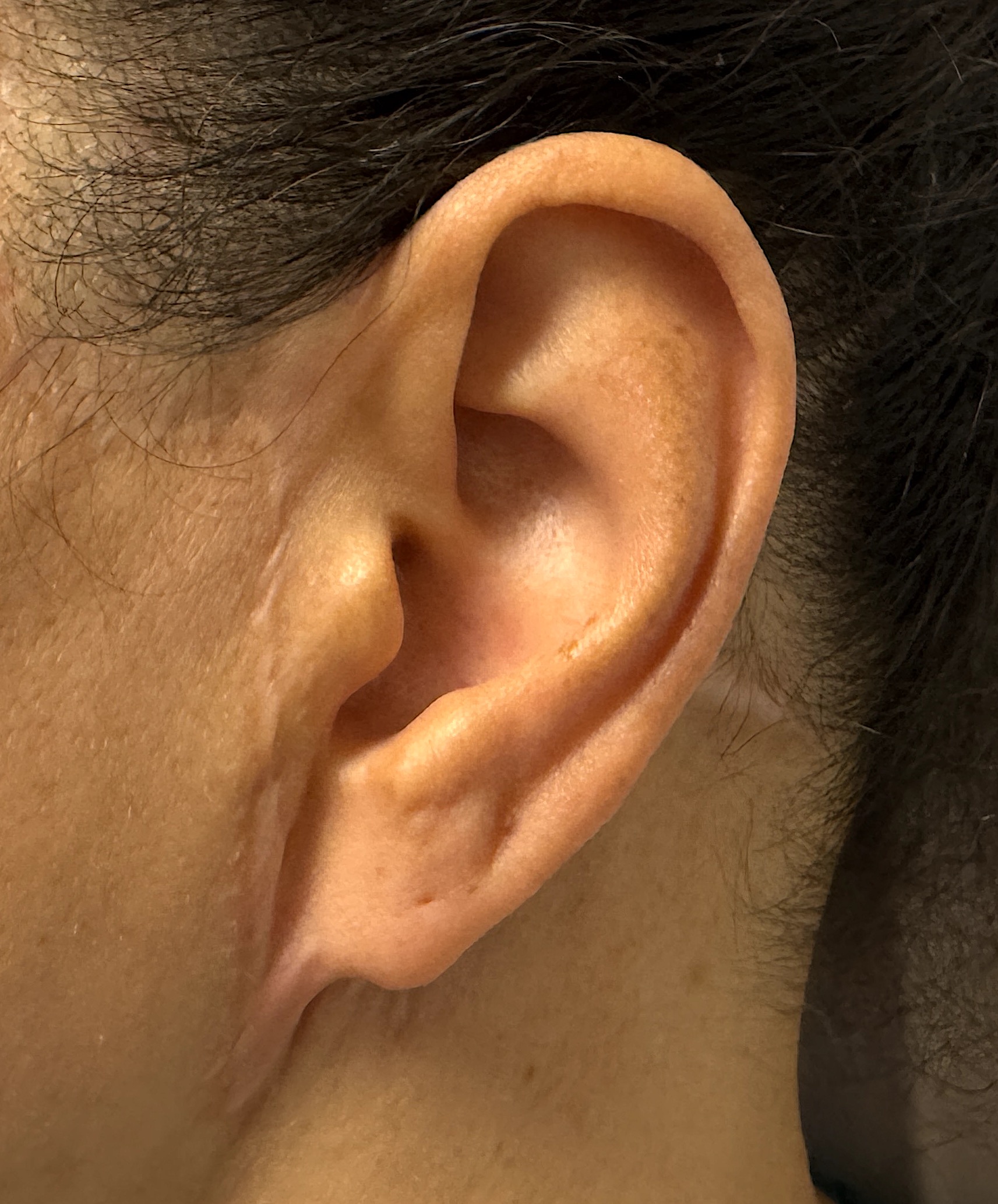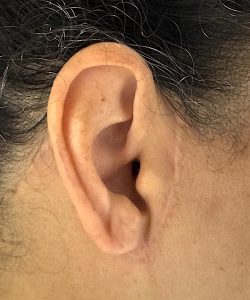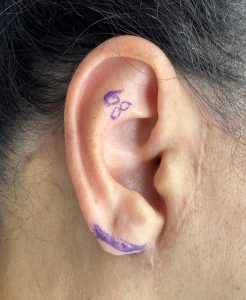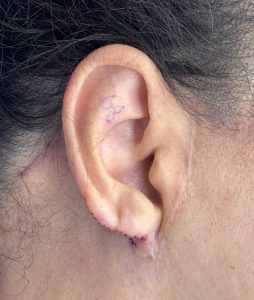Background: Facelift surgery has many variations in how it is performed with particular emphasis on manipulations of the intermediate and deeper tissue planes But the one common thread between most of these techniques is the need for incisions around the ears. Often overlooked is that the results of a facelift is often judged by the appearance of the scars in and around the ears due to their external visibility. The earlobe is easily distorted as it lacks cartilage support and the drifting of scar lines away from the ear can occur when too much tension is placed on the closure due to excessive tissue removal.
While prevention by proper incision placement, eliminating tension on the skin closure through deep support and avoiding over resection of skin will optimize scar appearance and avoid earlobe deformities secondary revisions can improve traction distortions and hypertrophic scarring.
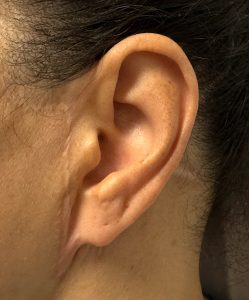
T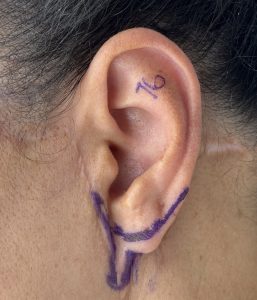
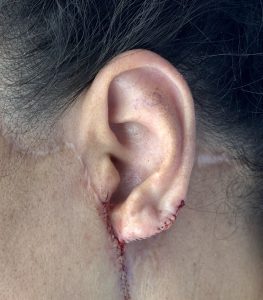
Improving earlobe and scar deformities after a facelift can consist of minor direct corrections or a variant of a facelift re-do. (flap re-elevation) Since the earlobe is the only non-cartilaginous part of the ear it is the most susceptible to deformations after a facelift. The most well known earlobe deformity is the pixie ear where it becomes elongated from carrying too much tension from the lift. While this patient’s left earlobe looked liked a pixie ear the elongation was really a hypertrophic scar. The placement of the preauricular incisions/scar lines was unusually anterior and not an ideal choice for a female. (retrotragal location would be preferred)
When considering secondary treatment completely re-elevating the facelift skin flaps could allow better scar placements and allow for improved earlobe symmetry and a more complete resolution. But for those seeking a less invasive approach and can accept incomplete scar concealment a direct excisional approach can be used as was done in this case.
Key Points
1) Ear deformities after facelift surgery are not rare and largely consist of elongated earlobes and visible scarring.
2) Correction of the pixie ear or infralobular scarring is either flap re-elevation or direct excision.
3) The direct excisional approach improves ear symmetry and reduces but does not eliminate visible scarring.
Dr. Barry Eppley
World-Renowned Plastic Surgeon

